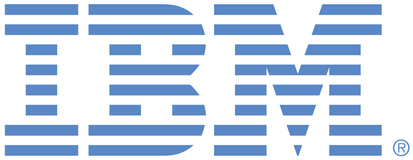
This portal is to open public enhancement requests against the products and services belonging to IBM Sustainability Software. To view all of your ideas submitted to IBM, create and manage groups of Ideas, or create an idea explicitly set to be either visible by all (public) or visible only to you and IBM (private), use the IBM Unified Ideas Portal (https://ideas.ibm.com).
Shape the future of IBM!
We invite you to shape the future of IBM, including product roadmaps, by submitting ideas that matter to you the most. Here's how it works:
Search existing ideas
Start by searching and reviewing ideas and requests to enhance a product or service. Take a look at ideas others have posted, and add a comment, vote, or subscribe to updates on them if they matter to you. If you can't find what you are looking for,
Post your ideas
Post an idea.
Get feedback from the IBM team and other customers to refine your idea.
Follow the idea through the IBM Ideas process.
Specific links you will want to bookmark for future use
Welcome to the IBM Ideas Portal (https://www.ibm.com/ideas) - Use this site to find out additional information and details about the IBM Ideas process and statuses.
IBM Unified Ideas Portal (https://ideas.ibm.com) - Use this site to view all of your ideas, create new ideas for any IBM product, or search for ideas across all of IBM.
ideasibm@us.ibm.com - Use this email to suggest enhancements to the Ideas process or request help from IBM for submitting your Ideas.

L’idée est intéressante dans le domaine du ferroviaire Français également ! SNCF VOYAGEURS
Hi Rob,
Most of our customers and prospects ask us for supporting the following exchange formats :
S1000D (technical Documentation : https://s1000d.org/), S2000M (Logistics : https://www.s2000m.org), S3000L(Maintenance : https://www.s3000l.org/), s4000P (Preventive Maintenance : https://www.s4000p.org/)
Thanks
Hi Ludovic,
Thank you for raising this Idea.
To help define the scope of the requirement, please can you provide more information regarding the specific areas of ASD that are priority areas of focus for the clients that you are engaged with?
I have used the following document for reference: https://www.sx000i.org/docs/SX002D%20Issue%202.2.pdf
It details the following 'Units of Functionality':-
Chap 3.28 Unit of functionality - Product and project
Chap 3.30 Unit of functionality - Product usage context
Chap 3.23 Unit of functionality - Mission definition
Chap 3.31 Unit of functionality - Product usage phase
Chap 3.6 Unit of functionality - Capability definition
Chap 3.15 Unit of functionality - Environment definition
Chap 3.27 Unit of functionality - Performance parameter
Chap 3.16 Unit of functionality - Facility
Chap 3.20 Unit of functionality - Location
Chap 3.5 Unit of functionality - Breakdown structure
Chap 3.26 Unit of functionality - Part definition
Chap 3.18 Unit of functionality - Hardware element
Chap 3.37 Unit of functionality - Software element
Chap 3.2 Unit of functionality - Aggregated element
Chap 3.44 Unit of functionality - Zone element
Chap 3.29 Unit of functionality - Product design configuration
Chap 3.3 Unit of functionality - Analysis candidate item
Chap 3.17 Unit of functionality - Failure mode
Chap 3.38 Unit of functionality - Special event
Chap 3.10 Unit of functionality - Damage definition
Chap 3.11 Unit of functionality - Decision tree template definition
Chap 3.19 Unit of functionality - In service optimization analysis − Definition of support tasks defined for the Product and its constituent parts
Chap 3.40 Unit of functionality - Task requirement
Chap 3.12 Unit of functionality - Design change request
Chap 3.39 Unit of functionality - Task
Chap 3.8 Unit of functionality - Circuit breaker
Chap 3.41 Unit of functionality - Task resource
Chap 3.9 Unit of functionality - Competence definition
Chap 3.33 Unit of functionality - Resource specification
Chap 3.42 Unit of functionality - Task usage
Chap 3.43 Unit of functionality - Time limit − Definition of serialized Product and Part individuals
Chap 3.25 Unit of functionality - Part as realized
Chap 3.35 Unit of functionality - Serialized part configuration
Chap 3.36 Unit of functionality - Serialized product variant configuration
Chap 3.21 Unit of functionality - Measurement point − Generic capabilities which can be used to assign additional associated information with each core business object
Chap 3.7 Unit of functionality - Change information
Chap 3.14 Unit of functionality - Document
Chap 3.13 Unit of functionality - Digital file
Chap 3.24 Unit of functionality - Organization
Chap 3.34 Unit of functionality - Security classification
Chap 3.32 Unit of functionality - Remark
Chap 3.4 Unit of functionality - Applicability statement − Definition of messages and message content
Chap 3.22 Unit of functionality - Message